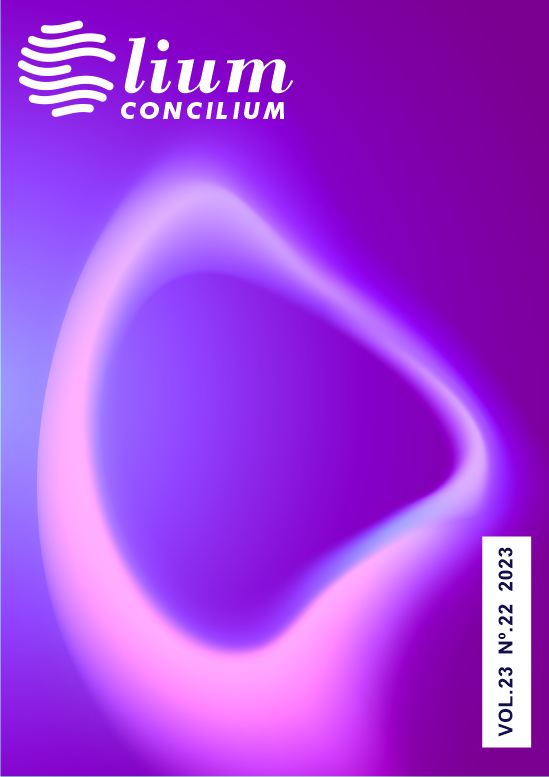Bioprospecting of secondary metabolites produced by endophytic actinomycete isolated from Aloe vera
Bioprospecção de metabólitos secundários produzidos por actinomiceto endofítico isolado da Aloe vera
Resumo
The aim of this work to evaluate the antibacterial action of secondary metabolites produced by endophytic actinomycetes, against isolates of medical interest. For such, the bacteria were isolated from the botanical sample and classical morphological identification was performed. The induction of metabolites production was carried out using the Submerged Fermentation technique, followed by purification of the extract. The evaluation of antibacterial activity was accomplished by using agar diffusion and Minimum Inhibitory Concentration (MIC) assays. Macro and microscopic analysis of the grown microorganism allowed it to be identified as belonging to the genus Streptomyces. Test results demonstrated that the extract was able to inhibit the growth of C. propinquum 431024, with an inhibition zone of 27±0 mm and of C. propinquum 36063, with an inhibition zone of 24±0 mm and MIC of 32.1 µg/mL for boths. The evaluation of biofilm formation resulted in: C. propinquun 421024 as a weak producer and C. propinquun 36063 as a moderate producer. The biofilm interference test showed that compared to the control there was a reduction in biofilm formation of 22% for C. propinquun 421024, as well as a reduction in pre-formed biofilm of 27%. There was a 48% reduction in the formation and 42% in the pre-formed biofilm of C. propinquun 36063. Lastly, it was concluded that the secondary metabolites produced by the endophytic actinomycetes demonstrated an antibiotic potential against clinical strains (nasopharynx) of Corynebacterium propinquum, a rare pathogen described for causing infections in patients with pulmonary involvement, pleural effusion, bacteremia and endocarditis and which presents an emerging antibiotic resistance.
Downloads
Referências
AMALFA, F. et al. Corynebacterium kroppenstedtii y patología mamaria. Acta Bioquímica Clínica Latinoamericana, v. 55, n. 3, p. 357-60, 2021.
AMORIM, E. A. F. et al. Antimicrobial potential of Streptomyces ansochromogenes (PB3) isolated from a plant native to the Amazon against Pseudomonas aeruginosa. Frontiers Microbiology, 2020.
AYSWARIA, R. A.; VASU, V.; KRISHNA, R. Several endophytic species of Streptomyces with dynamic metabolites and their meritorious applications: a critical review. Critical Reviews in Microbiology, 2020.
BERNARD, K. et al. Emendation of the description of the species Corynebacterium propinquum to include strains which produce urease. International Journal of Systematic and Evolutionary Microbiology, v. 63, n. 6, p. 2146-2154, 2013.
BERNILLA, Mayra Soriano. Degradación de pesticidas por Actinomicetos. UCV-SCIENTIA, v. 2, n. 1, p. 34-37, 2010.
BHATTI, A. A.; HAQ, S.; BHAT, R. A. Actinomycetes benefaction role in soil and plant health. Microbial pathogenesis, v. 111, p. 458-467, 2017.
MANCUSO, G. et al. Bacterial antibiotic resistance: the most critical pathogens. Pathogens, v. 10, n. 10, p. 1310, 2021.
MENDES, Luís Paulo Teixeira Moreira. Avaliação da atividade antimicrobiana de antibióticos encapsulados em estruturas zeolíticas. 2020. Dissertação. (Mestrado em Técnicas de Caracterização e Análise Química) – Universidade do Minho, Portugal, 2020.
MILOSAVLJEVIC, M. N. et al. Antimicrobial treatment of Corynebacterium striatum invasive infections: a systematic review. Revista do Instituto de Medicina Tropical de São Paulo, v. 63, p. e49, 2021.
NEEMUCHWALA, A. et al. In vitro antibiotic susceptibility pattern of non-diphtheriae Corynebacterium isolates in Ontario, Canada, from 2011 to 2016. Antimicrobial Agents and Chemotherapy, v. 62, n. 4, 2018.
OLIVEIRA, D. M. P. et al. Antimicrobial resistance in ESKAPE pathogens. Clinical Microbiology Reviews, v. 33, n. 3, 2020.
PERES, K. C. et al. Vacinas no Brasil: análise histórica do registro sanitário e a disponibilização no Sistema de Saúde. Ciência e Saúde Coletiva, v. 26, n. 11, 2021.
PETRINI, O. Fungal endophyte of tree leaves. In: Andrews, J. & Hirano, S.S. (Eds.) Microbial Ecology of Leaves, 179-197, 1991.
QUINN, G. A. et al. Streptomyces from traditional medicine: sources of new innovations in antibiotic discovery. Journal of medical microbiology, v. 69, n. 8, p. 1040, 2020.
SCHEFFLER, R. J. et al. Antimicrobials, drug discovery, and genome mining. Applied Microbiology and Biotechnology, v. 97, p. 969-978, 2013.
SHIRLING, E. B.; GOTTLIEB, D. Methods for characterization of Streptomyces species. International Journal of Systematic Bacteriology, v. 16, n. 3, p. 313-340, 1966.
SIVALINGAM, P. et al. Extreme environment Streptomyces: potential sources for new antibacterial and anticancer drug leads? International Journal of Microbiology, v. 2019, 2019.
TRISUWAN, K. et al. Epoxydons and a pyrone from the marine-derived fungus Nigrospora sp. PSU-F5. Journal of Natural Products, v. 71, n. 8, p. 1323-1326, 2008.
XU, S. et al. Direct detection of Corynebacterium striatum, Corynebacterium propinquum, and Corynebacterium simulans in sputum samples by high-resolution melt curve analysis. BMC Infectious Diseases, v. 21, n. 1, p. 1-9, 2021.



